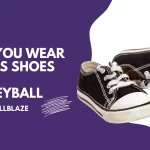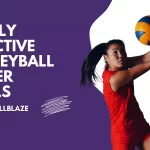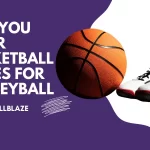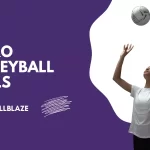There are a number of important roles on a volleyball team, each requiring a specific skill set.
In volleyball, there are six key positions: setter, outside hitter, opposite, middle blocker, libero, and defensive specialist.
A seventh position, the serving specialist, is also possible, although it tends to occur only in exceptional situations.
Next, we’ll take a closer look at the starting locations for each position, followed by a discussion of each position’s individual duties.
Volleyball Court Diagram with positions
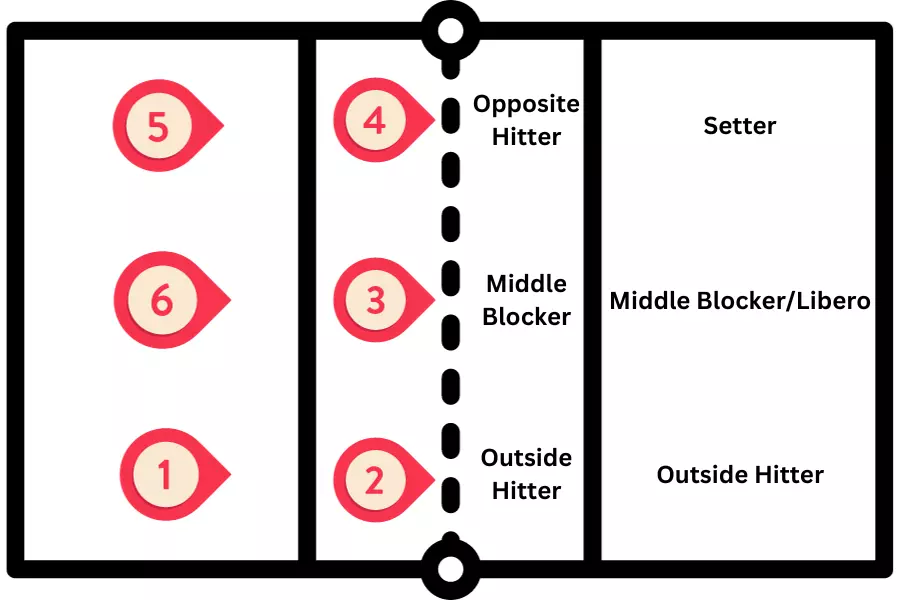
There are different volleyball court positions that are often referred to as numbers. Counting clockwise through each zone, the back/middle position is 6 and the numbers go backward to 1.
As you can see from the diagram above, each player’s role has its own typical home position. Depending on the role/position of the player, this is where they prefer to spend most of their time.
- Libero: Generally plays in the backcourt at the 6 position.
- Middle Blockers: Surprisingly, middle blockers tend to stay in the middle of the court. In the backcourt, middles usually replace liberos, so they spend most of their time in position 3.
- Setter: If they are on the front court, they typically set out of position 1 or 2.
- Opposite Hitters: Players who stick to the first and second positions are also known as right-side hitters.
- Outside Hitters: Also called left-side or wing hitters, outside hitters normally play in the fourth or fifth position on the court.
I’ve created a full guide to volleyball rotations if you would like to learn more about each position rotation!
Volleyball Positions Abbreviations
In the following list, you will find shorthand abbreviations for the positions described above.
| Position in Volleyball | Abbreviation |
| Setter | S |
| Middle Blocker | MB |
| Outside Hitter | OH |
| Opposite Hitter | OPP |
| Libero | L |
| Defensive Specialist | DS |
The following is a breakdown of each position and its responsibilities.
Libero
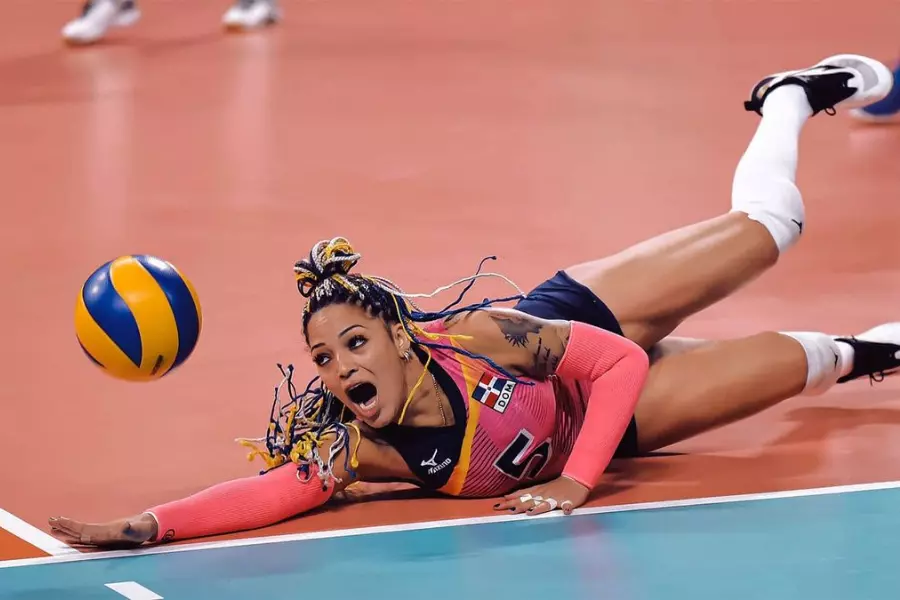
As a back-row pass and defense specialist, the libero is a vital member of the team.
Their primary role is as serve reception specialists, but they dig balls and play all kinds of defensive plays as well. They typically sub in for the middle blocker in the backcourt.
Liberos Are Technicians
It is not uncommon to see them diving, rolling, and making athletic defensive saves all over the place while on court. They are usually the team’s most accurate passers.
Libero is the shortest position in volleyball
Most of the time, liberos are the smallest players on the court. Because they can’t spike the ball and only play in the back row, they sacrifice height in favor of agility and precision.
Liberos wear different colored jerseys
In order for referees to keep track of their positions on the court, liberos wear different colored jerseys from the rest of the team since they are not able to rotate into the front row or attack the ball.
Libero Responsibilities and Attributes
- Willing to take command: Liberos are like setters; they are the captains of the back court. A libero is always responsible for passing a serve that goes into the seam between two receivers whenever it hits the seam.
- Accurate setter: If the setter cannot reach the second ball, the libero is often tasked with delivering the ball to a hitter (since they cannot attack, they may as well). For an attacker to succeed despite a pass gone astray, they must be able to set long distances with a high degree of precision.
- Extremely quick and agile: The players in this team possess a lot of speed and agility. It’s amazing how fast they react and how fast they are.
You may enjoy reading Libero Volleyball Drills
Middle Blocker
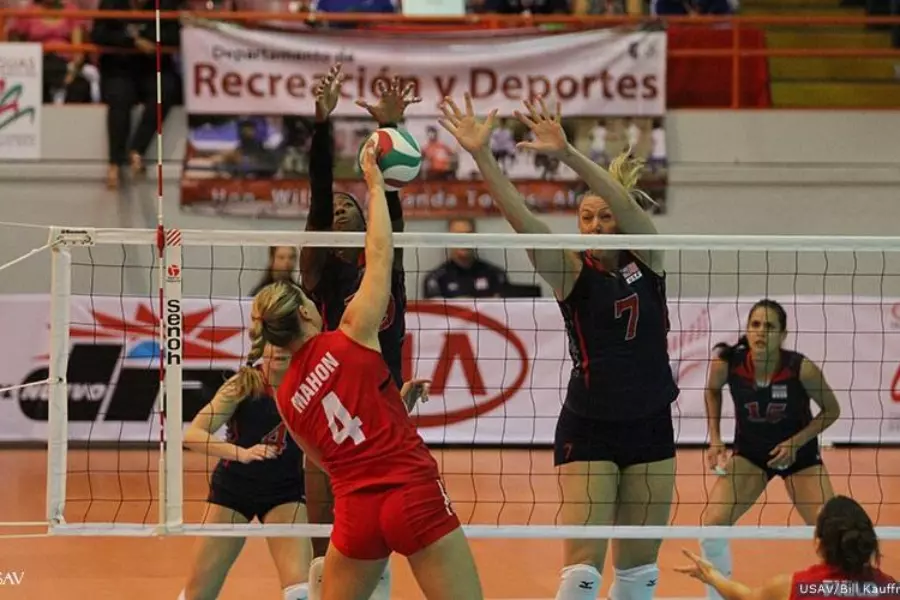
The middle blocker often has the tallest stature on the court, and they’re responsible for running quick attacks through the middle of the court and blocking the opposing team.
Middle blocker, the great big dumb one
Often lacking in athleticism and technical ability, middle blockers are also called middle hitters.
Getting blocks and hitting the ball are two of their priorities.
Middle blockers tend to be unaware of the court, not very good at passing, and not very good at digging at junior levels.
A middle is a specialist in blocking
In order to effectively defend against the opposition’s outside, middle, and opposite attacks, the middle blocker must be located in the center of the court.
To transition from their defensive roles into fast paced offenses, they must have strong footwork and quick reaction times.
Attacks swiftly by the middle hitter
As part of their offensive strategy, middle blockers usually run quicks in the middle of the court, which are high-paced attacks.
It takes incredible timing and precision for the middle hitter to reach the ball almost immediately after it leaves the setter’s hands.
To free up defensive pressure for a wing attack, the opposing middle blocker is forced into commitment.
Middle Blocker Responsibilities and Attributes
- Defensive powerhouse: Central players coordinate joint blocking with wings, setting up positions and timing. There is almost always a death sentence in volleyball when there is a weak blocking presence.
- Height: To be a middle blocker, you must be tall. Your hands should be close to the top of the net in order to block quick attacks. The closer they are, the faster you can block.
- Fast footwork: Setters at the highest level move the ball quickly between sticks. In order to have any chance of blocking the opposing hitter, top middle blockers must move their feet extremely efficiently.
Setter
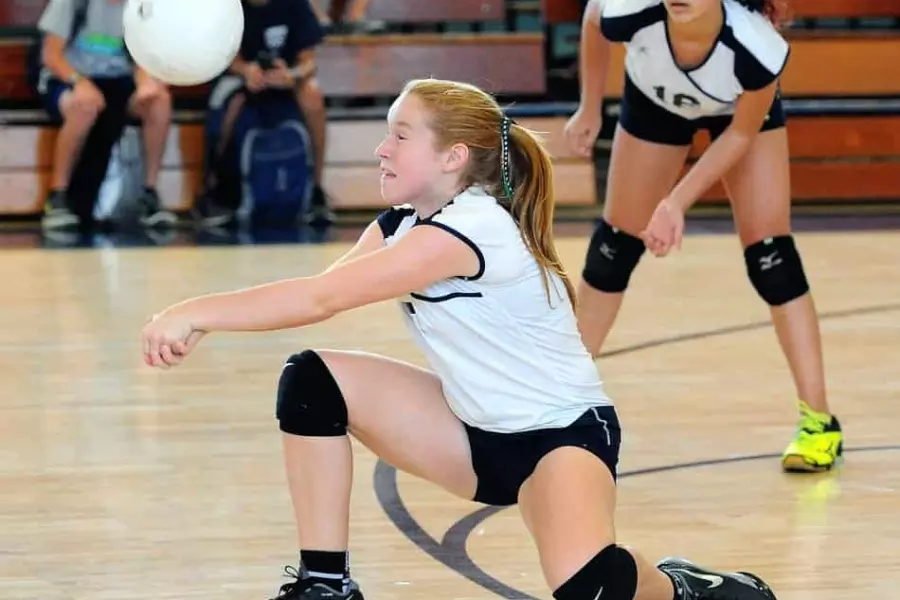
Setters orchestrate the offense of their teams. Their job is to deliver the ball from the passers in the backcourt to the hitters in the frontcourt.
A setter is the brain of an operation
Their decisions and actions on the court are dictated by them. Their communication skills are excellent and they are natural leaders.
Even when they’re not the captain, they need to act as if they are.
Setters are responsible for delivering goods
Setting the ball for the outside, opposite, or middle hitter to kill is the setter’s primary responsibility during serve reception.
In order to exploit a hole in the opposition’s defense, a great setter coordinates an attack to exploit it.
Setters use sign language to communicate
Hand signals are often used by setters to communicate specific attacks or combinations to the offense.
The opposition often doesn’t know what specific attacks they’ll have to defend against because this is done secretively between plays.
In addition to blocking and defending, setters may occasionally pass the ball based on the formation. As well as serving the ball, they need to be able to catch it.
You may enjoy reading Volleyball Setter Workouts
Setter Responsibilities and Attributes
- Leadership, assertiveness: The best setters take charge of the situation. It is they who are responsible for the majority of the court’s responsibilities: they are the link between the defense and the offense.
- Accurate and consistent: It must be possible for them to consistently set butter. An attacker needs to put the ball in the perfect spot for a setter to put it away.
- Decently strong: Good setters tend to be able to reach the ball far and high. You might not be ready to be a setter if you are a younger, weaker player.
- Quickness: Getting underneath second balls requires setters to chase down dodgy passes. In order to succeed, they must be fast and agile.
- Height: Many people think tall players are hitters and middle blockers. However, being tall as a setter is hugely advantageous, as it makes the opponent’s job much harder.
You may enjoy reading Volleyball Setter Drills
Opposite Hitter
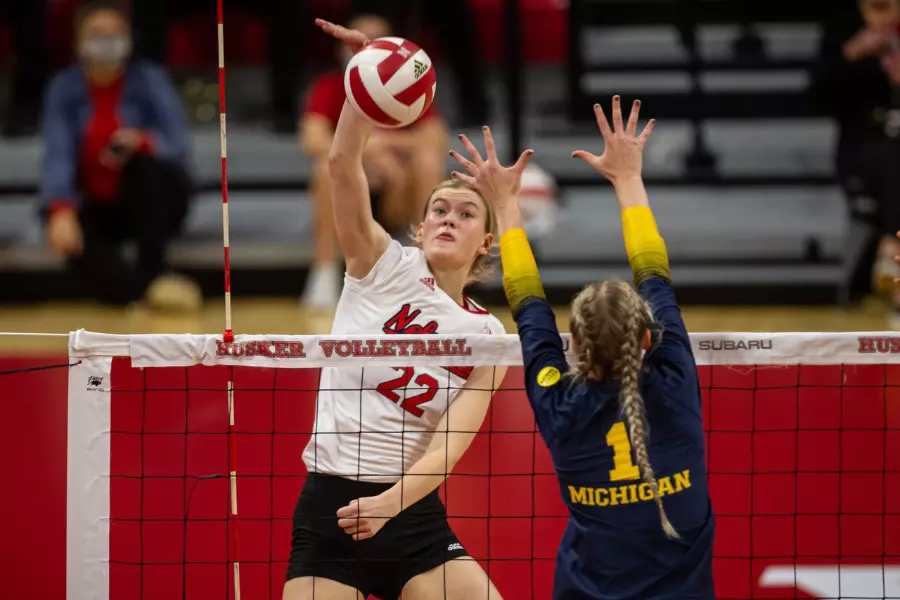
Attacking and blocking are the primary responsibilities of the opposite hitter on the right side of the court.
Despite being one of the primary wing attackers on the court, the opposite or right-side hitter plays a very different role than the outside hitter.
The opposing hitter doesn’t have to pass
There isn’t much passing between the opposing teams, so serve reception skills aren’t necessary.
A middle blocker and an outside hitter can be thought of as opposite hitters.
Opposite Hitters Sometimes Help With Setting
In the case of a setter out (i.e. unable to reach the second ball or contact the first ball), the opposite will often step in to set the ball, so having a good opposite is very helpful.
Back row spiker: Opposite hitter
It is also necessary for these players to be able to hit the ball well from the back row. It’s not unusual for opponents to be able to jump well.
In volleyball, one of the most impressive things to witness is when an opponent absolutely crushes a back-row attack!
Often, opposite hitters are left-handed
It’s quite beneficial if they’re left-handed since they attack from the right side of the court. When you are left-handed, the ball does not have to cross your body before being attacked.
All things considered, right-handedness isn’t always a bad thing, just as left-handedness isn’t always a bad thing.
The opposition is a proficient blocker
The opposing team’s outside hitter is matched up against the opponents and they play an important blocking role.
It is easier for opposite hitters to shut down the left-side offense when they are tall and have decent jumping ability.
Opposite Hitter Responsibilities and Attributes
- Having the ability to attack from the back row: Spiking is a difficult skill to master. It is even more difficult to spike from the back row. A good opposite will be an offensive threat no matter where he or she is on the court. It is extremely difficult to hit the ball around a block in the back row, but it is not impossible.
- Tall and athletic: Opposites are outside hitters who have specialized in blocking and spiking, but never focused on passing. Their height and power often make them stand out.
- Left-handed: While being right-handed can make you a great opposite, being left-handed definitely makes it easier to hit from the right side of the court.
Outside Hitter
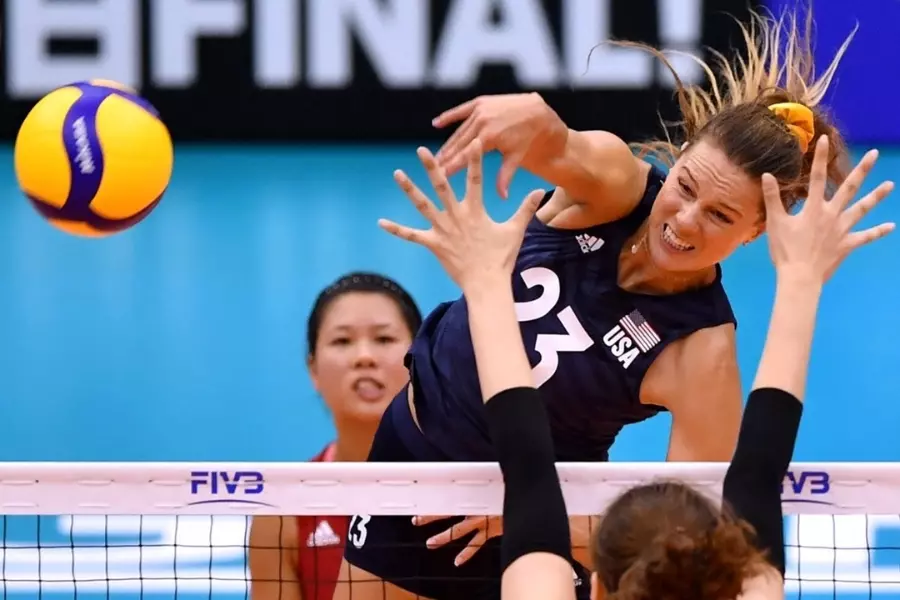
In volleyball, outside hitters, or left-side hitters, attack from the left side of the court and are often regarded as the go-to attackers. As well as passing during serve reception, they have an important role to play.
Outside Hitter: A superstar on the court
There is no doubt that the outside hitter is often the most talented spiker, especially at the youth level.
The majority of them are capable of jumping high and hitting hard. In contrast to the middle and opposite, they are often the ones who receive more sets.
It is common for second balls to be ‘released’ to the outside player when play breaks down and the defense is scrambling.
Good Outside Hitters Are Good Passers
If all you know is how to hit the ball, you won’t get far as an outside hitter…
There is more to being a good hitter on the outside than just being a good hitter. Since they are a big part of service reception, they should know how to pass as well.
They should also be able to block and defend as well. In order to be a good outside player, you need to be an all-rounder as well.
Outside Hitter Responsibilities and Attributes
- Consistent and reliable: The outside must be able to consistently tank the ball and shank passes. It is imperative that they are consistent as attackers and pass the ball well.
- Smart offensively: They know when to hook a ball when to roll it around the block, and when to tip it.
- Athletic: There is a higher vertical jump among outsiders than any other position. Getting past blockers will be easier for the outside if they can hit hard. Additionally, they must be agile and coordinated enough to transition quickly from defense to attack and to hit balls from awkward positions.
Defensive Specialist (DS)
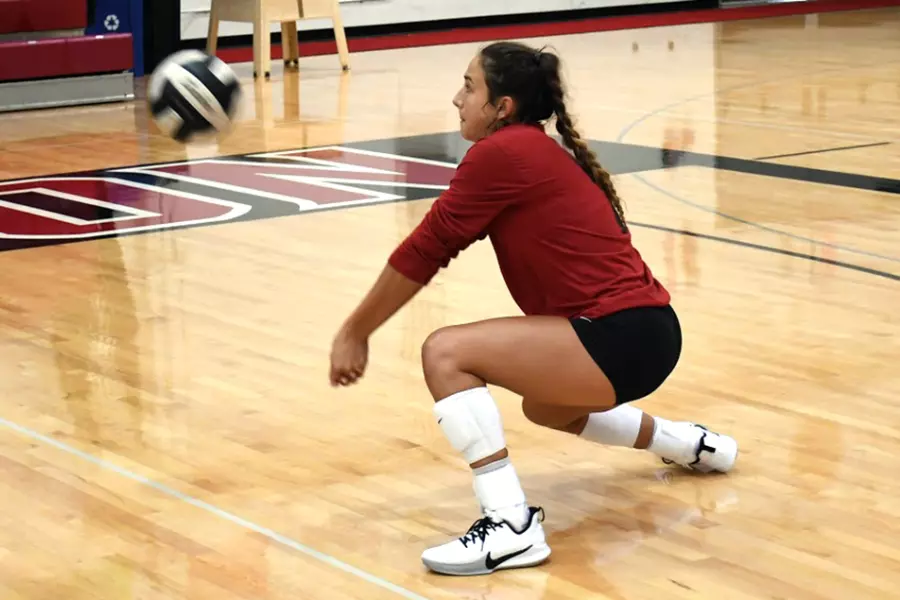
In general, defensive specialists share all the same skills as liberos, except they wear no different color jerseys and can sub for any player.
Defensive Specialists assist in high-pressure situations
When the scoreboard is extremely tight towards the end of a set, you’ll usually see a Nintendo DS entering the game.
It’s not uncommon for a DS to be introduced into the game to take out a particularly weak defender or passer in the lineup.
It may be helpful to have an extra reliable passer or someone who is capable of making a stuff block when you need a sideout.
Defensive Specialist Responsibilities and Attributes
- Plays well under pressure: DS are going to be called on down the stretch when it’s really close, so they need to remain composed in high-pressure situations.
- Accurate and agile: When teamsideouts are needed, a DS often makes extremely accurate passes. Passing is extremely important for them, just as it is for liberos. In addition, they must be able to cover the court efficiently and make great scramble defensive plays.
You may enjoy reading Are Running Shoes Good For Volleyball?
Serving Specialist: Rare 7th Position
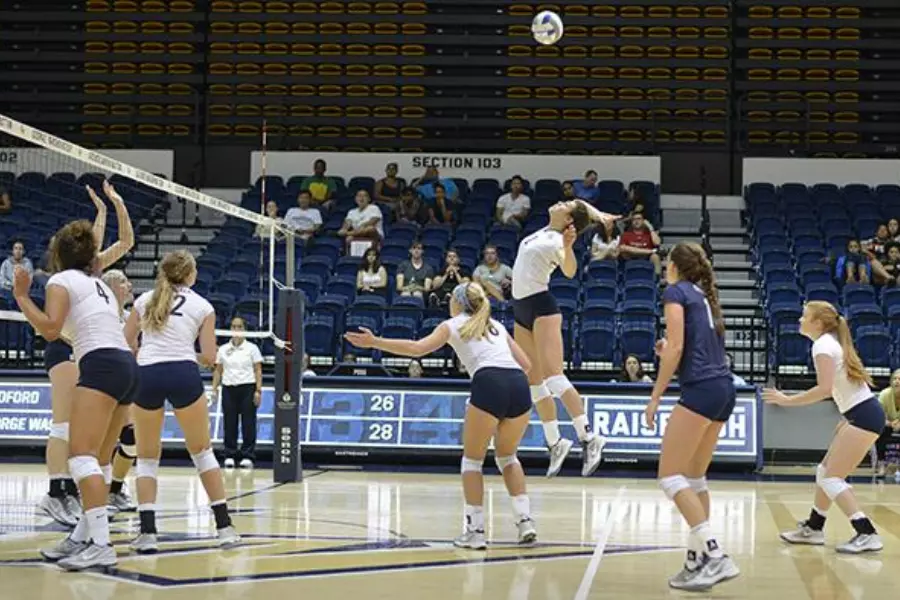
A volleyball team has seven positions, according to some people. In volleyball, there are usually either six or seven positions and I don’t really think this one counts.
It is possible for a player to be subbed into a match solely so they can make the most of their exceptionally strong serve to win the point.
A Serving Specialist’s Ideal Situation
Rarely, but when your team has a highly skilled server, he or she could be substituted back out of the rotation after they have done their job.
Consider a scenario in which your team is up 27:26 and your opponent has an extremely strong serve reception lineup with an extremely strong attacker present. A server that has been on the service line for a while is also headed to the repair department.
Substituting a player on the bench who has an especially reliable and effective serve could be a good idea so they can ensure the set alone with their serve pressure.
There Aren’t Really Serving Specialists
A serving specialist is about as likely to appear on the court as a unicorn unless you’re playing at the international or professional level.
Are you having trouble deciding what volleyball position to play? Take a look at this article for some advice!
Volleyball Positions FAQs
What is the role of the libero in volleyball?
Known for his digging and passing skills, the libero specializes in defense. There are unique substitution rules and they wear a different jersey.
Can a player switch positions during a game?
Rotations and substitutions can allow players to change positions, but they must follow the rules and do so during dead-ball situations.
What is the hardest volleyball position?
Due to the immense responsibility they have to create offensive opportunities for their team, the setter is often viewed as the hardest role.
Defense and offense are held together by the setter. To ensure everyone is on the same page, they communicate constantly with passers, hitters, and coaching staff.
As each position presents its own challenges, there is no clear-cut answer to this question.
See my article on the easiest and hardest positions by clicking here.
What are the tallest and shortest volleyball positions?
The middle blocker is usually the tallest player in volleyball, while the libero is the shortest.
It isn’t always like this, however. After the libero, I was the shortest player on the Australian U17 team (if you count 6’5′′ as short) when I was a middle blocker!
A middle blocker may also have a few cm advantage over a tall opposite hitter.
It is common for the libero to be the shortest player on the court.
What skills are essential for a successful volleyball player?
Teamwork, communication, and the ability to serve, pass, block, and hit are key skills.
What volleyball position wears a different shirt?
There is a difference in the color of the libero’s jersey from that of the other players.
Due to the libero’s restrictions, the refs can keep track of the libero’s position on the court by keeping track of where he or she is playing.
What positions serve in volleyball?
The libero is the only position in volleyball that does not require serving.
According to USA volleyball rules, the libero can serve in one rotation, even though it doesn’t happen very often.
Liberos are not allowed to serve in Europe.
How has the role of volleyball player positions evolved over time?
In recent years, the game has evolved in terms of strategies and player roles, resulting in more dynamic and specialized positions.
What are the best volleyball positions for tall players?
Middle blocker and opposite are the best volleyball positions for tall players because they require more blocking than passing, so height becomes more important.
The MB usually stands the tallest out of all the other positions on the court, followed by the opposites and middles.
What are the hitting positions in volleyball?
Outside hitters, opposites, and middle blockers are the three primary hitting positions in volleyball.
There are more opportunities for the outside hitter to hit the ball than the rest of the team… then the opposite, followed by the middle blocker.
If the setter is in the front court, he or she may even hit the ball, especially if they are left-handed.
The libero is the only one who cannot hit the ball.
Why is adaptability important in volleyball?
In addition to adding depth to the team, players who are adaptable are more likely to succeed.
What does OH & OPP mean in volleyball?
OH stands for outside hitter.
OPP stands for opposite hitter.
What does MH refer to in volleyball?
Middle blockers are sometimes referred to as middle hitters, thus MH means MB.
What volleyball shoes should each position wear?
My extensive article on volleyball shoes covers which shoes are best for each position.
Conclusion
It is crucial for volleyball players to understand their positions in order to succeed in this sport. Every position contributes to the overall success of the team with its unique responsibilities and challenges. Teamwork and communication are essential to success on the court, whether you are a setter, hitter, libero, or another position. It is however recommended to use the Best Volleyball Shoes For Ankle Support in order to perform at your best.

